1) Not all nails are created equal!
Think carefully about your nails before you even start shopping: how wide are they? How long are they? How different in length do you keep your dominant and non-dominant hands? Is your nail bed flat, or do your nails curve in a C-shape when you look at them end-on? If you think about this first, it should save you from buying the wrong sized plates. Moyou-London for example, do 18 image plates for short, narrow nails, and 12 image plates for long, broad nails; you don’t want to buy the wrong size, and end up with images that won’t fit well on to your nails. Full image plates (where the plate is one continuous big picture, made up of various patterns) are full-proof, but you do still consider the size of the detailing on them. Certainly as a newbie, I found the choice and control of a whole image plate daunting and avoided them, but now I have Pueen’s Encore collection and use them a lot, both using my eye to make sure I keep picking up the same section of the image, or blocking of a section with washi/masking tape, much like a surgeon’s drape. So, be brave - don't rule full image plates out!
Just remember, ALWAYS PEEL OFF THE PROTECTIVE PLASTIC FIRST! You can't pick up a stamp otherwise. This is the stamping equivalent of "Have you turned your computer off and back on again?"
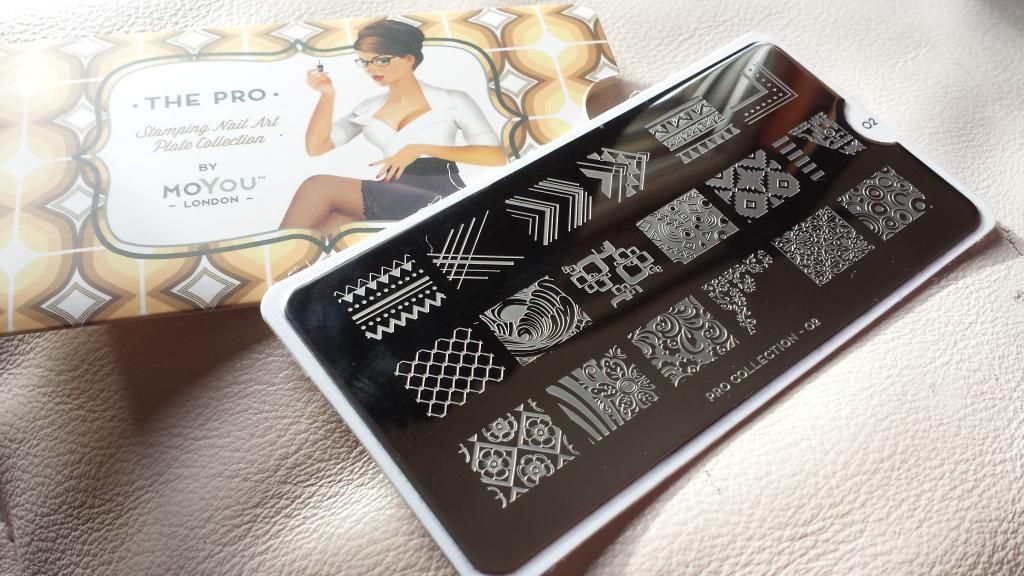
2) The Stamper is Mightier Than the Sword (Almost!)
Another thing you need to know is that not all stampers are 'born ready': some need a little priming, as they won't pick up polishes consistently at first go. I have had two stampers like this - the marshmallow below, and my rectangular Moyou stamper (squishy firm). Both have just needed a wash in hot water and Fairy Liquid (dish soap), and with some practising on my technique via paper, they have worked perfectly after that. The next stop if your stamper still won't pick up, is to gently file the thinnest top layer away that you can - across the pond, they all swear by a 'magic eraser' to do this, but a nail file will do the same job. This should always be a last resort though, as you can never undo your filing, and it is easy to take so much off that you ruin its chances of picking anything up. Manic Talons has a good, well illustrated tutorial here to help you along with priming :)
My white marshmallow (which gets dirty just thinking about lint) beside my firm, pink Konad stamper.
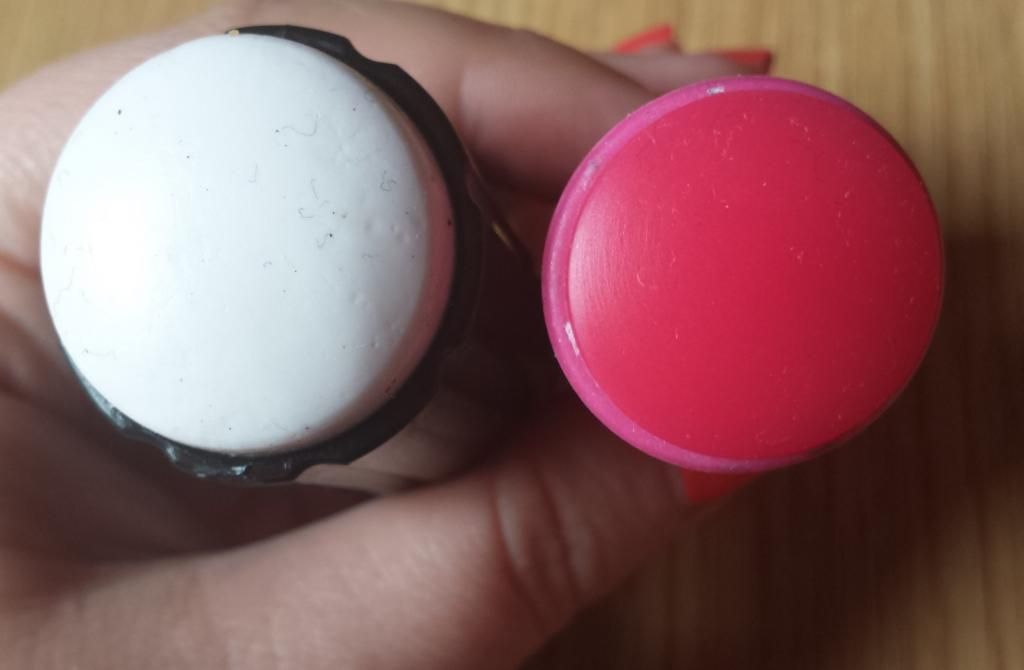
Why a marshmallow is so called!
3) Preparation, Preparation, Preparation!
When are settling down to do your stamping, get everything you need ready before you start! I'll post a photo the next time I stamp in day light, but my prep list contains:
- my designated 'nail towel' to protect my table
- pure acetone and glass jar with some decanted in to it (bottle caps are a small but useful alternative, just be wary of how easy they are to knock over/off surfaces)
- cotton buds for plate cleaning
- cotton pads for plate cleaning, and for drying off the acetone before I reapply polish to the plate
- cellotape to clean my marshmallow stamper (NPR is fine for my Konad) and to clean up the excess around my nails
- a brush for clean up (mine's a nail brush from Ebay, but am awaiting delivery of an ELF angled brush because it comes so highly recommended)
- a bin, for the cellotape and cotton buds that can quickly pile up
- kitchen roll/tissue paper to wipe my scraper on each time I use it
- my stamping polish(s), with the lid unscrewed and the cap just sitting in place.
4) Don't Underestimate Scraping
Scraping needs to be done swiftly and at the correct angle – if you’re having to do it several times, then you are leaving your polish more likely to dry out in the grooves of the plate. I prefer to use a plastic scraper than a metal one, as it doesn’t leave ugly (but perfectly harmless) scratches on the plate. 45 degrees is the only angle that works for me, and when I give friends manicures, the speed they remark about is usually my scraping speed.
5) Hurry Up!
6) Your Environs Matters
6) Top Coat - Gentley Does It Now!
Don't rush the top coat: I usually clean up my nails with the cellotape and the brush (dry brushing at first to clear up the edges, then picking the remainder up by dipping it in acetone and blotting excess off on cotton pads) to give the stamping polish ample time to dry. Also, take your time with the actual application of the top coat, floating it so that your brush doesn't actually touch the image. (In other words, leave a good sized bead of TC on the brush, set that to your nail, and just use the brush gentley on the bead's surface to move it all the way across your nail, rather than pushing so hard that your brush goes straight down through the bead and touches your stamp. This is especially important with top coats that melt and set your polish, such as Seche Vite and HK Girl, which are fab toppers for stamping, they just need an extra second or two of care).
7) Try, Try Again!
The best but most boring piece of advice is practice, practice, practice! There are no magic words and no short cuts – it just has to be done. Here’s a few sneaky tips that I have picked up along the way though:
- Paper is your friend: stamp on to paper, and do so for a whole host of reasons - to check that your polish is opaque enough to stamp with, to check that your new plate is deeply enough etched, to check that your stamper is picking up, to check that you are working fast enough to pick up and stamp down cleanly and crisply, to check that you are using the right technique (rolling side-to-side or up-and-down vs. pressing straight down) along with the right stamper (marshmallow, firm or anything in between) for you and your nails (their width and curvature will affect what’s best for you), to check that you are using the right amount of pressure (less than you might think). Also, invest in some black paper: this lets you know if your polish is opaque enough to stamp over dark colours, as well as over light ones.
- Have an unchipped, plain mani? Stamp it, just before you remove it. There is nothing quite like stamping on real nails; luckily I have keen friends to practice on as well most weekends!
- Want to get more practice in but can’t be bothered with all the time it takes to paint your nails first? Treat yourself to a gel manicure (cured under a UV lamp) - these come up in my local area for about £10 on Groupon all the time. You can stamp over the top of these manicures at home, removing and restarting as much as you like as nail polish remover will only dissolve your normal/stamping polish, but not the gel polish the beautician has applied. Some strongly pigmented gels can bleed a little though (e.g. reds), so do let your beautician know, as they may want to cure a second top coat over your manicure just to be sure.
Checking out 2 new plates on paper (Moyou Tropical 02 and 06). Most of these were with my new marshmallow at the time hence giving me more practice with that too, but I did check out a difficult image on 02 with the Konad. A good acetone-clean of the plate and a bit more careful technique meant that I got there with the troublesome flower in the end though (on another sheet of paper).
8) Normal Polishes Can Work, But Stamping Polishes Are an Investment
- One coaters: thick and pigmented enough to be opaque in a single coat. Gel effect polishes usually fit this bill (and I love the Barry M Gellies for stamping).
- Metallics/foils: many people actually find normal silvers and golds (e.g. Maybelline, Barr M, China Glaze) work better than stamping golds/silvers (e.g. Konads).
- Holographics.
- Old, thick and gloopy polishes that you thought were destined for the bin
- Certain brands are also known to work well e.g. Sally Hansen Insta-Dri (often available in Poundland and B&M in the UK), and many (but not all) Sinful Colors (I've seen some of these in Poundland too). Friends across the pond also rate Kleancolor Metallics, but I have never seen them available in the UK.
For white and black stamping, I use trusty Konad stamping polish. The holy grail of specialised stamping polishes are really Mundo de Unas though, available directly from MdU or via Rainbow Connection in the UK. I have 5 minis and love them, but do be prepared for the whiff! Rica stamping polishes have also been recommended to me, but I haven't seen the need to fix what isn't broken with my Konads and MdU.
9) The Common Mistakes We All Make
So, while I think common errors have been implied along this post, it's hard to beat a visible check list to see where you might be making mistakes:
- Working too slowly: paint, scrape, and pick up within seconds, pausing only to check that your image has been successfully picked up and the alignment on your nail before stamping.
- Working in the wrong place: remember, don't sit under your air conditioning, in a draught etc, as your environment can affect how your polish is drying.
- Using the wrong polish: have you done the white/black paper tests, to see if it's opaque enough? Or have you done a test swatch on a nail wheel, with your stamping colour over the coloured polish you are wearing? Are you working at the right speed for the type of polish you have? (Many polishes require fast work, but stamping polishes like Mundo de Unas can sometimes be crisper if left for 5 seconds before pick up).
- Is your stamper ready to use? Remember to try your stamper out on paper/ a nail wheel before using it for a mani you intend to wear out, as you may find it doesn't pick images up straight away. A hot wash in Fairy (dish soap) usually works for me, but you may need to very carefully file the slickness away (and here's a great tutorial on how to prime your stamper).
- Misjudging the pressure: are you pressing so hard that you blur the image and are at risk of your stamper slipping? Are you pressing so lightly that you will never pick up all the image? Are you adjusting the pressure for your stamper, if for example, you have just switched from a hard stamper to a marshmallow?
- Pick-up and transfer technique: are you pressing your stamper directly down onto your plate and nail, or are you rolling the stamper across either/both? You need to find out what works best for you and your chosen stamper, but I found that rolling left to right with my round stampers (both Konad and marshmallow) on the plate and my nail was the right thing to do, but that rolling up and down with my rectangle Moyou stamper works best. (Straight down has never worked for me, but I have very curved nails, so this likely never will; it makes sense to me to pick the image off the plate in the same way that I am going to transfer it on to my actual nails).
- The wrong stamper: you have worked on your speed, got hold of proven polishes, and still not been successful? Don't despair! In most cases, you have the wrong kind of stamper for your technique, nail shape, or just your preference. There are no hard and fast rules - it's trial and error, so often it means buying a few. I try never to see it as a waste of money though - for doing decals (coloured in stamps - see the pic below), you paint the image in on the stamper, let it dry, and then put it on your nails. It really saves times if you can put the image on to several stampers to paint and dry at the same time, rather than being limited to one image and one stamper! (A tutorial video to explain decals is here).
- Plate problems: is your plate definitely properly etched? Does it need an acetone wash before its first use? (I find Moyou plates with fine detail benefit from a wipe done with 100% acetone before first use). If I am still failing despite several basic checks, then I change the stamper and scraper, and switch to a polish I know works if I'm having an issue with my current one: if it still doesn't work, then it could be a plate issue, but thankfully this is rare amongst brand names (in a 'you get what you pay for' type way). Also, look up your plate's code/name online: have other bloggers had similar problems too?
Decal photo, courtesty of LuvMyLacquer. Now, imagine colouring in one stamper 10 times and waiting for the layers to dry, versus painting in multiple stampers just the once or twice!
10) Ask (Preferably Before All Else Fails)
The first stamping manicure that gave me hope (Xmas 2013), using Barry M Gelly in Guava, Nails Inc silver foil, and a Moyou Pro XL plate (I don't have the details, as I wasn't even thinking of blogging back then):
The first manicure will all the correct kit for my nails (Konad white, a marshmallow stamper, plastic scraper etc). Again, pre-thoughts of blogging, so lacking details (but it was a Moyou Pro XL plate, Nails Inc green that bled in to yellow after using Seche Vite top coat, hence the pre-clean up photo to show the colour change at my cuticles):
So please, feel free to get in touch with questions, comments, or your own tips for getting things right :) Or, why not do your own 'then and now' post and share the link with us, to see how far your stamping has come along, and give all of us still on the learning curve even more hope that practice really does make perfect?! :)

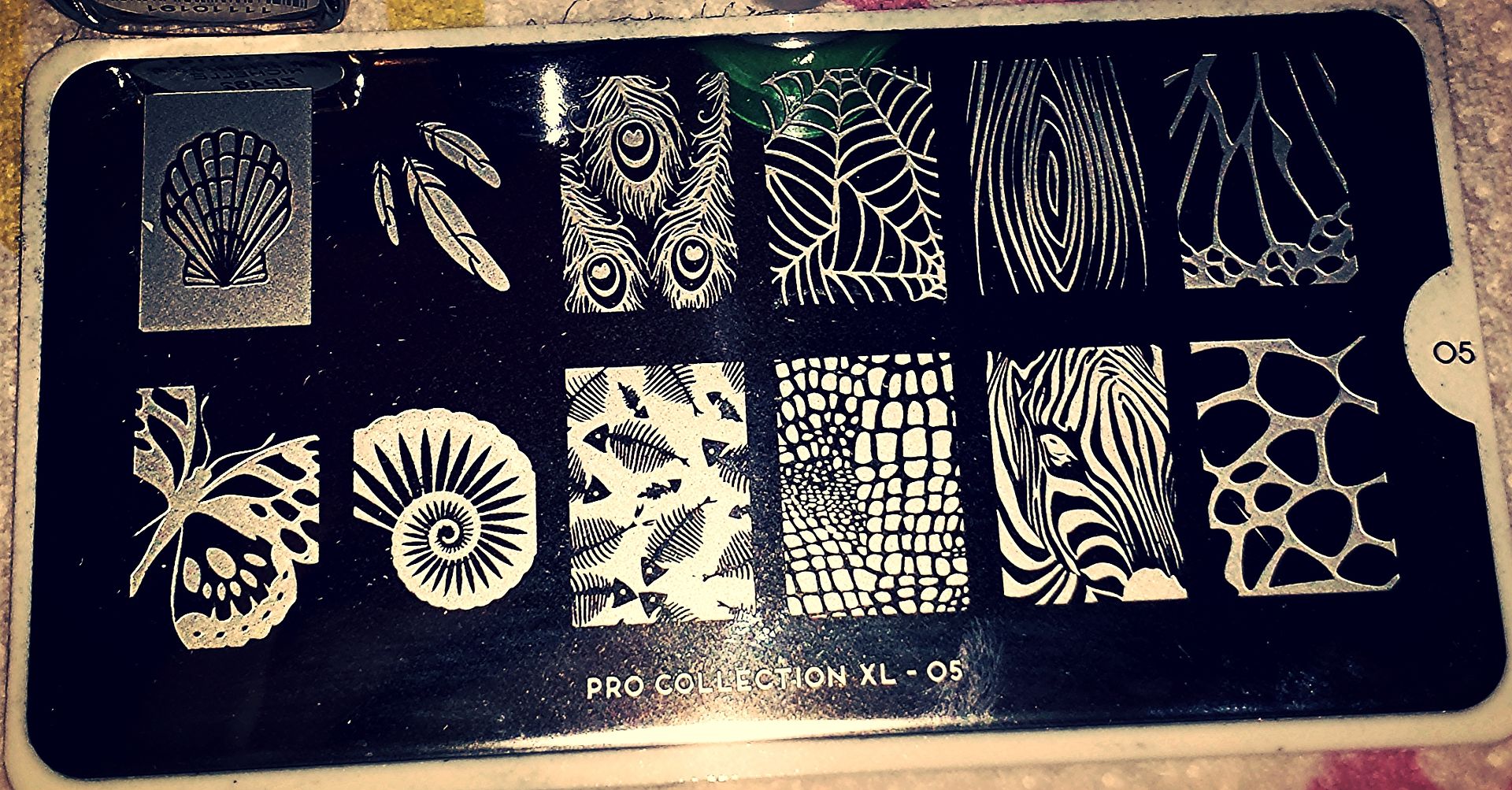

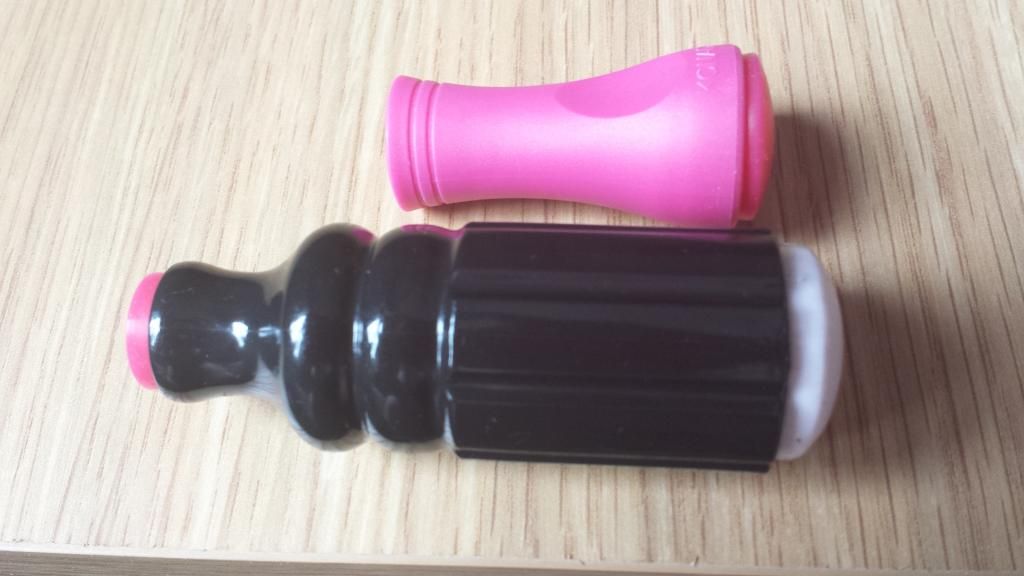
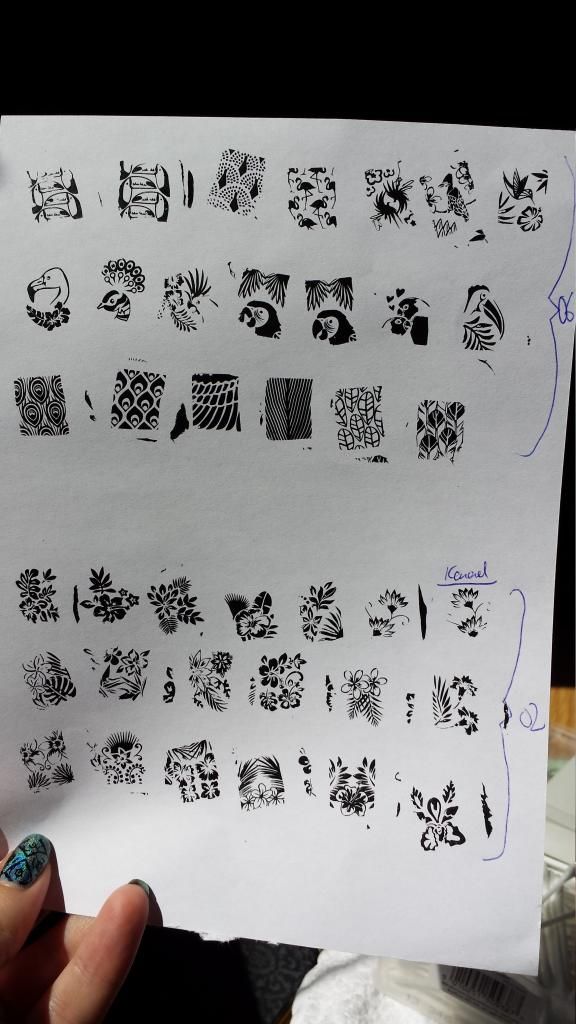

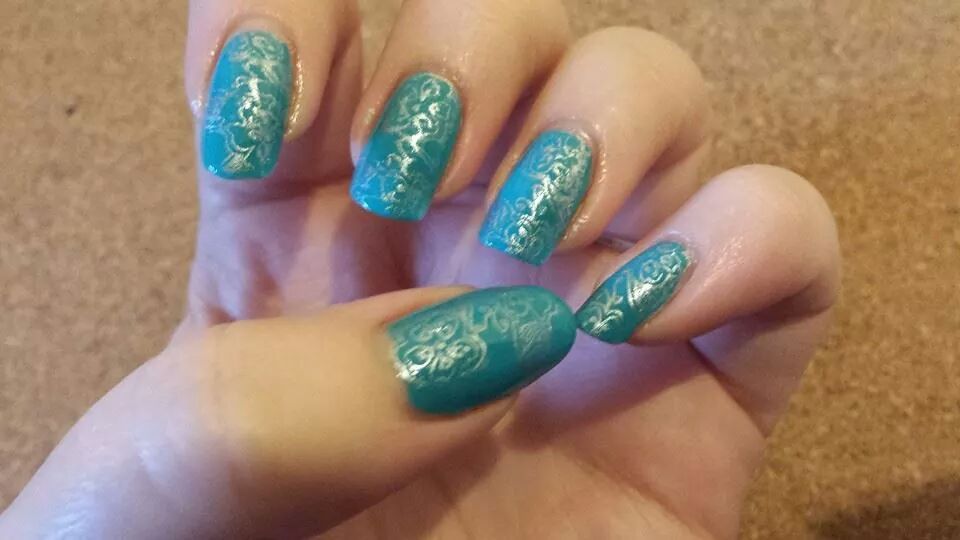

Fantastic post!
ReplyDeletethank you so much :)
Cheers Dee! :D x
DeleteThis comment has been removed by the author.
ReplyDelete